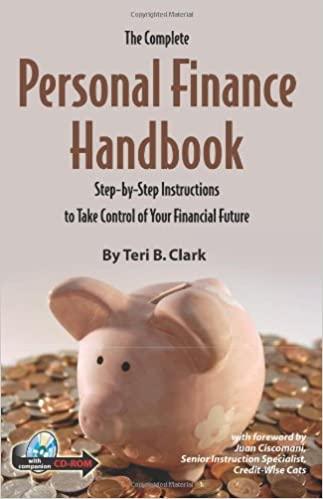Answered step by step
Verified Expert Solution
Question
1 Approved Answer
You are the CEO of a Florida based property insurer. Your company sells homeowners insurance in the state of Florida only. Because of the narrow
You are the CEO of a Florida based property insurer. Your company sells homeowners insurance in the
state of Florida only. Because of the narrow business focus, your company is highly exposed to
catastrophic losses. For simplicity we are going to ignore all nonhurricane related losses We are
assuming that they have already been paid, just as we are assuming all of the premiums for the policies
you sold have already been collected The total surplus that your company has is $ million. You
control percent of the Florida homeowners insurance market. In other words, you can expect your
share of all hurricane related losses to be of the total insured hurricane losses. However,
historically your share of hurricane losses has been anywhere from percent to percent of total
insured losses. Your company is currently rated A by A M Best and you have been told by A M Best
that if your surplus falls below $M you will be downgraded. You have consulted with your
reinsurance brokers and you have been able to narrow down your capital structure decisions to one of
four choices.
Do nothing. Do not purchase any reinsurance, nor do anything with Cat Bonds. In other words,
go bare.
Purchase a reinsurance contract that has a $M policy limit per occurrence and a $M
retention. This reinsurance contract will cost $M out of your $M surplus
Purchase a reinsurance contract that has a $M policy limit aggregate and a $M
aggregate retention. This reinsurance contract will cost $M out of your $M surplus
Issue a Catastrophe bond that pays you $M if aggregate industry losses exceed $B in a
storm season. The cost of issuing the cat bond is $M out of your $M surplus
Based on these choices, you must answer the following questions Justify each answer using simulation
analysis:
Which capital structure yields the highest insurer capital?
Which capital structure yields the lowest likelihood of bankruptcy? What is that likelihood?
Which capital structure yields the lowest likelihood of a ratings downgrade? What is that
likelihood?
Which capital structure would you recommend, why?
Do your answers change if the prices changed? Suppose the price of the cat bond goes up to
$M and the cost of reinsurance policy # fell to $M Reanswer questions through with
the new prices.
What if data were not included in the analysis, do your answers change?
a Did the distributions change?
b Reanswer questions through with the new data.
While doing the project, there are a few other questions you will need to answer:
Which frequency distribution did you pick? Why?
Which severity distribution did you pick? Why?
Some data is recorded for the years but you question its accuracy. Is the data recorded
for accurate? Did you adjust the data recorded for at a minimum you
need to add data How did you make adjustments to it If so did it change your
answers?
Step by Step Solution
There are 3 Steps involved in it
Step: 1

Get Instant Access to Expert-Tailored Solutions
See step-by-step solutions with expert insights and AI powered tools for academic success
Step: 2

Step: 3

Ace Your Homework with AI
Get the answers you need in no time with our AI-driven, step-by-step assistance
Get Started


